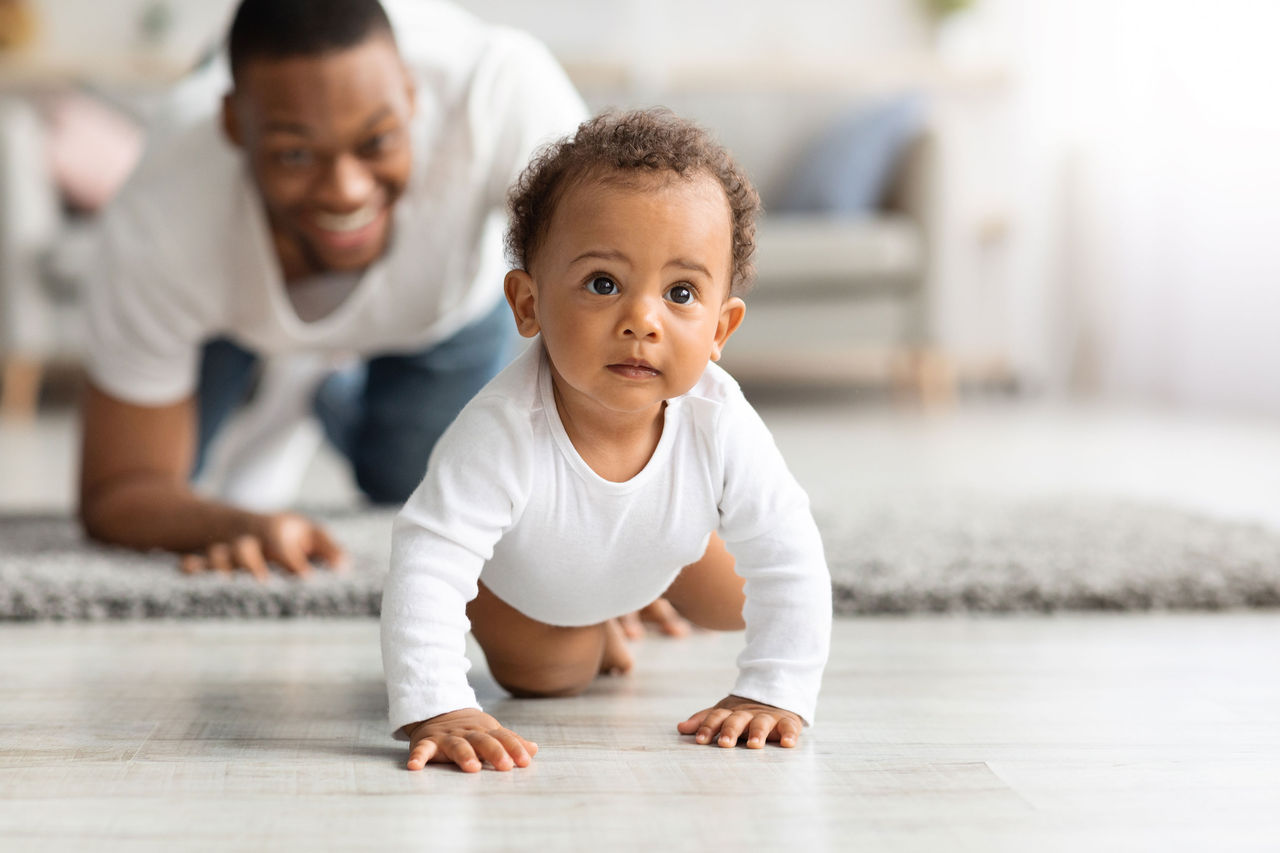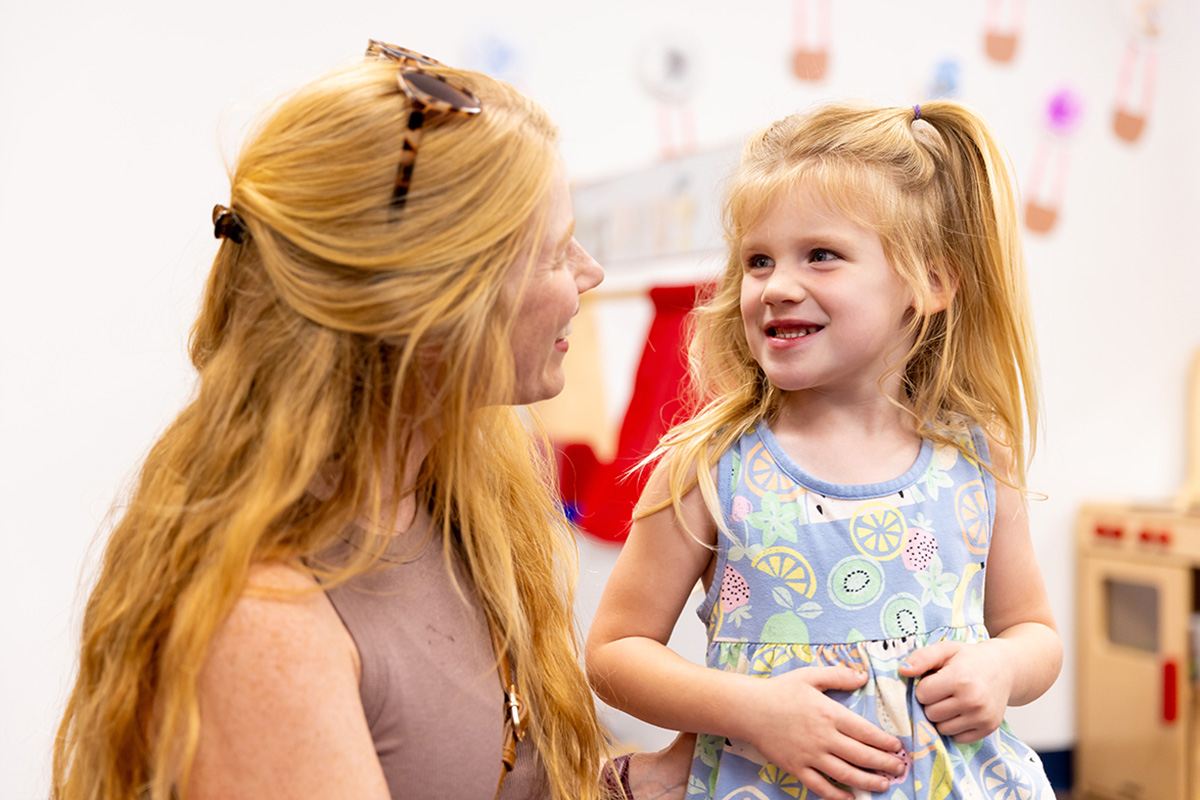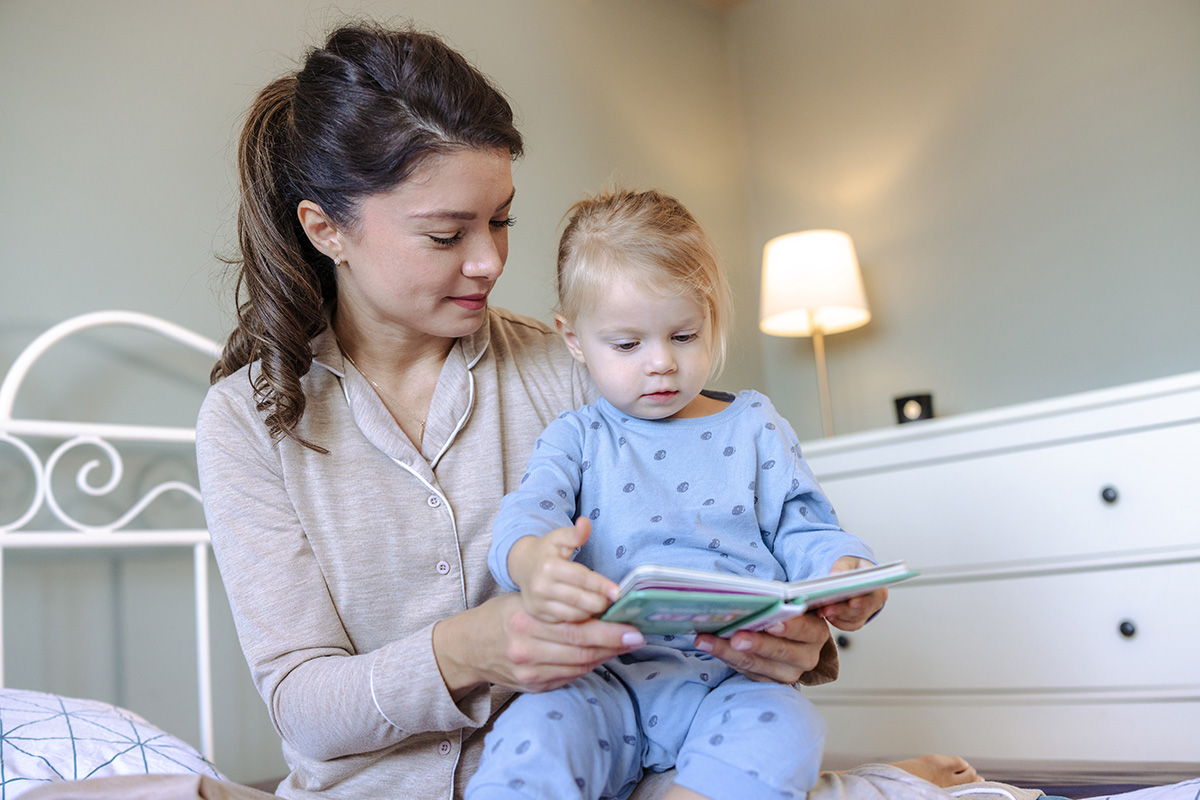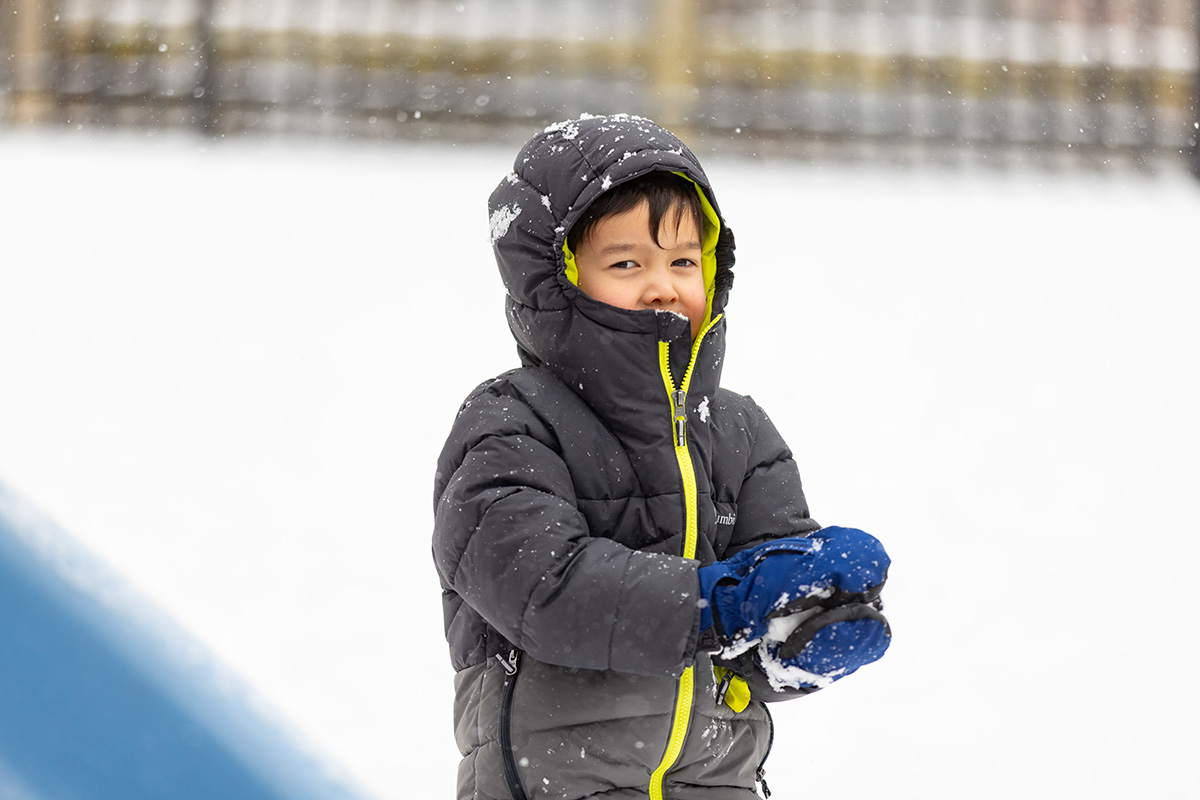As babies grow from newborn to toddler, movement becomes a significant part of their ongoing development. The first step toward having a child who is independently mobile is crawling, which presents so many possibilities for play time, learning and exploring. But when do babies start to crawl? The age is different for each child, however, there are certain pre-crawling stages and milestones to look for that serve as good indicators that your baby may become mobile sooner rather than later.
Understanding the Developmental Stages of Crawling
There are a number of stages that precede crawling, which are a great way to anticipate when your baby will become fully mobile. These stages include:
- Tummy time — During tummy time babies begin to strengthen the muscles required for crawling, including head and neck control.
- Pivoting — Babies often start to move on their belly in circles.
- Planking — Some babies rise up onto their hands and knees while others form a true plank position on hands and toes.
- Scooting on belly — Some babies use their bellies to move forward.
- Rocking in crawling position — Babies may get up on all fours and start to rock forward and backward.
- Belly to sitting up — Some babies will learn to move from being on their belly to sitting up.
- Pushing backward — Some babies begin by pushing backward with their arms before they learn to crawl forward.
The Typical Age Range for Crawling Milestones
It is important to remember that development varies greatly between babies. The typical age range for classic crawling falls between seven to ten months. Delayed crawling is not uncommon, and some babies never crawl before they walk. If you are concerned about your baby’s developmental progress, consult your pediatrician.
Different Types of Crawling and Their Significance
New parents are often surprised to learn that there are several different types of crawling, and each one has a different meaning as far as the development of muscles and motor skills are concerned.
- Classic crawl — A baby uses their opposite hands and knees to propel forward across the floor.
- Belly crawl —Think of the belly crawl like an army crawl, in which the baby pulls their body forward on their belly using opposite arms and legs as they go.
- Bear crawl — The bear crawl is when babies walk like a bear on outstretched hands and feet as they move forward. This type of crawling may signal that your baby will soon be ready to stand.
- Rolling crawl — Some babies roll to move across a space. Rolling is often the precursor to classic crawling.
- Bottom scoot crawl — This type of crawling involves babies sitting upright, using their arms to scoot their bodies forward.
Signs That Your Baby is Ready to Start Crawling
Here are a few indicators that crawling may be on the horizon:
- Your baby is pushing onto all fours or hands and toes.
- Your baby is sitting up all by themself.
- Your baby pivots on their belly.
- Your baby is pushing backwards on their hands and knees.
Encouraging and Supporting Your Baby’s Crawling Journey
Encouraging crawling is a helpful way to support your baby as they learn to become mobile. Employ helpful motivating techniques like:
- Getting down on their level and doing push-ups with your baby.
- Assume a crawling position and rock back and forth with them.
- Place a favorite toy just far enough away to encourage movement.
- Offer support under your baby’s chest when they attempt to crawl.
Common Challenges and Concerns During the Crawling Phase
While most babies eventually crawl there are some babies that never will. Babies who do not learn to crawl may still learn to walk without issue. If your baby never crawled, it does not necessarily mean there is anything wrong with them or their development. If you are concerned about signs of abnormal crawling or you begin to notice that your baby struggles to move one or both sides of their body, you should contact your pediatrician. Early intervention is key to addressing any potential developmental issues in babies.
Safety Measures for a Baby on the Move
Once your baby learns to crawl and becomes mobile, crawling safety is key. Consider some of these helpful tips:
- Crawl on the floor to observe your home from your baby’s perspective. Take note of any potential hazards and babyproof them accordingly.
- Keep close watch over your baby, as they are unlikely to stay put for long.
- Install baby gates to block off stairwells or rooms that are unsafe for your child.




